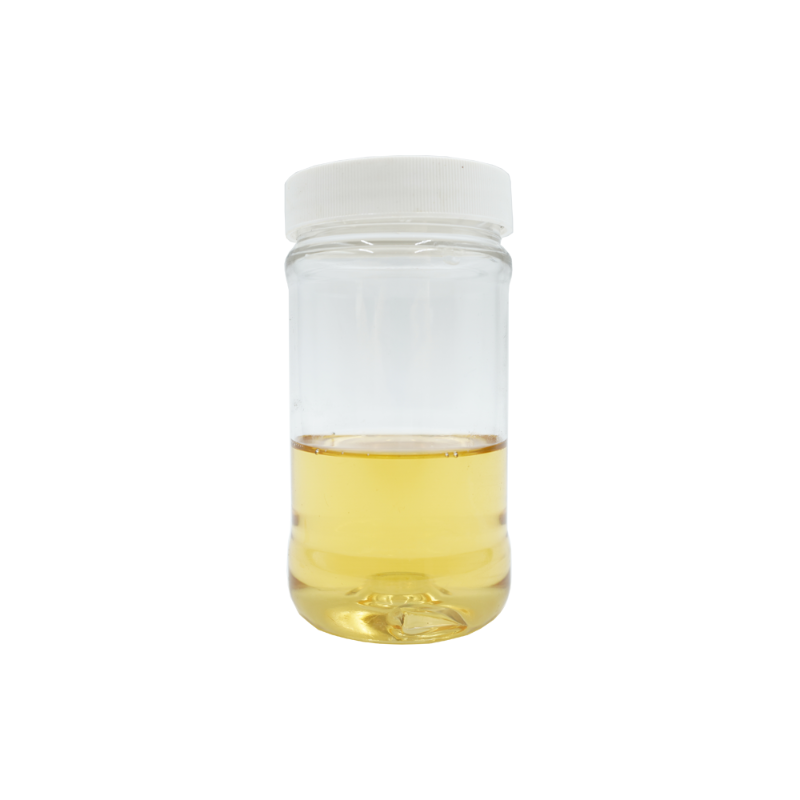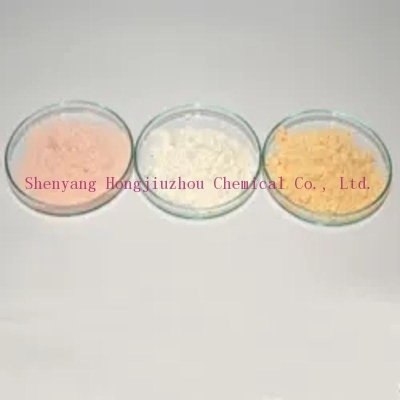-
Categories
-
Pharmaceutical Intermediates
-
Active Pharmaceutical Ingredients
-
Food Additives
- Industrial Coatings
- Agrochemicals
- Dyes and Pigments
- Surfactant
- Flavors and Fragrances
- Chemical Reagents
- Catalyst and Auxiliary
- Natural Products
- Inorganic Chemistry
-
Organic Chemistry
-
Biochemical Engineering
- Analytical Chemistry
- Cosmetic Ingredient
-
Pharmaceutical Intermediates
Promotion
ECHEMI Mall
Wholesale
Weekly Price
Exhibition
News
-
Trade Service
Abstract: This paper introduces the development status of heavy anti-corrosion coatings in China and the characteristics and advantages of solvent-based high solids coatings applied to heavy anti-corrosion coatings, as well as the latest research progress and advantages of Hanyu chemical water-based high solids sub-coatings; Zinc-rich coatings (70% volume), water-based non-zinc-rich high solid content coatings (65-80% volume) and weather-resistant epoxy coatings, based on the current solutions for heavy anti-corrosion coatings and many industrial coatings in the context of comprehensive oil-to-water, is currently a good opportunity for domestic enterprises in the field of heavy anti-corrosion coatings to change lanes.
keywords: high-water solid coatings, solvent-based high solids coatings, water-based epoxy resins, water-based coatings, heavy anti-corrosion coatings
In recent years, with China's rapid economic development, downstream applications continue to grow demand, China's defense corrosion coatings market continues to expand. However, the high-end market of anti-corrosion coatings, that is, heavy anti-corrosion coatings are monopolized by international giants, the competitiveness of domestic enterprises in the industry needs to
. If we follow the existing technical direction, that is, solvent-based coatings high solid content and solvent-free direction, it is difficult to see the future of the real rise of domestic heavy anti-corrosion coatings enterprises. Although, the existing solvent-based high solid weight anti-corrosion coating can temporarily meet the current VOC limit standards, but more environmentally friendly low VOC and 0VOC water-based high solid parts coating product development and application can become a good opportunity for domestic enterprises to change lanes over the road.
The development of heavy anti-corrosion coatings in China
heavy anti-corrosion coatings are mainly used in ships, port machinery, marine engineering, containers, petrochemicals, railways, bridges, construction steel structures, electric power and water conservancy projects and other fields. Among them, marine engineering, steel, containers, highways are included in China's top ten industry revitalization planning in an important area, related to the national development strategy and economic lifeline. As the main engineering materials in important areas of the national economy, heavy anti-corrosion coatings also play a very important role in protecting the development of high-tech industries such as marine development and new energy support, aerospace and national defense industry. In fact, the level of development of heavy anti-corrosion coatings has become one of the important international standards to measure the advanced degree of the coating industry. Heavy anti-corrosion coatings is one of the earliest and most internationalized fields in China's coating industry, since the reform and opening up in the 1980s, China has been the world's largest producer and market of heavy anti-corrosion coatings.
It is generally accepted that heavy anti-corrosion coatings have high technical content and high barriers to entry, mainly because the market in the field of heavy anti-corrosion is seen, especially the high-end market is mostly monopolized by several large international companies, such as Jotun, Norway, AkzoNobel of the Netherlands, China Tuo of Japan, Pompete of the United States, Haihong old man of Denmark, etc. Statistics show that international giants account for more than 60% of China's heavy anti-corrosion paint market share. In areas with high performance requirements for heavy anti-corrosion coatings, such as port machinery, ships, marine engineering, the market share of international giants is more than 80%. Compared with large international companies, China's heavy anti-corrosion coating enterprises mainly small enterprises, in technology, capital and other aspects of competitiveness is weak, products are mainly concentrated in the low-end market, homogenization phenomenon is serious, lack of independent innovation ability, lack of core competitiveness, low added value of products, weak profitability. Although some of our domestic enterprises through efforts to innovate and increase various inputs, to achieve a number of breakthroughs, but overall, compared with domestic companies and foreign investment, in the global distribution point, product costs, production scale, construction quality, product grade, service levels, etc. there is still a big gap. It is difficult for domestic enterprises to gain an advantage in the competition.
the future of heavy anti-corrosion coatings water-based power
Over the past decade, high-solid coatings in heavy anti-corrosion and other fields have made very good development, technology has been very mature. These technologies occupy most of the market areas where they can meet construction conditions and coating requirements. Most of these areas have high film thickness requirements, a coating of film thickness needs to be 100 microns, or even hundreds of microns or more. Coatings like these already meet the requirements of low VOC coating limit standards. Therefore, the industry generally believes that solvent-based high solid coatings are the future of heavy anti-corrosion coatings, at least for the time being, do not need water-based coatings market.
Although high solid coatings and solvent-free coatings for heavy anti-corrosion coatings meet the current limit standards for VOC coatings, VOC emissions in these areas are also significant due to the huge consumption of heavy anti-corrosion coatings. As shown in the coatings listed in Tables 1 and 2, solvent-based epoxy high solids coatings are widely used in areas of heavy corrosion protection, such as bridges, wind energy towers, marine engineering and other steel structures, generally these coatings volume solid content between 60%-75%, VOC between 250-360g/L. If the volume of heavy anti-corrosion coatings in 2017 is calculated at 3.6 million tons, VOC emissions in 2017 should be between 750,000 and 1.08 million tons. The actual VOC will be greater than this value because this calculation does not take into account the RELEASE of VOC consumed by the material in manufacturing, construction, and equipment cleaning. With the continuous improvement of people's environmental health requirements, VOC limited standard requirements will inevitably be raised, which will continue to promote the industry to ultra-low VOC or even 0VOC direction.
the era of water-based coatings hitting heavy anti-corrosion coatings comes ahead of time
the era of water-based coatings hitting heavy anti-corrosion solvent-based high-solid coatings is when water-based coatings began to replace solvent-based high-solid coatings. The advent of water-based coatings impact heavy anti-corrosion coatings needs water-based coatings to meet at least the following conditions:
a. water-based coatings can achieve high solids
paint 65%-80%;
high-water high solid coating VOC ultra-low or 0VOC;
d. water-based coating performance meets the standard requirements.
is committed to creating green chemistry. Since the establishment of the company in 2018, has established a heavy anti-corrosion coating hydration project, focusing on the development of ultra-low VOC and 0VOC water-based high solid content epoxy coatings. This paper describes the technological innovation and solution of Hanyu Chemical in realizing the new ultra-low VOC water-based epoxy high solid coating. Hanyu Chemical's series of ultra-low VOC or 0VOC water-based epoxy coatings have been able to achieve ultra-high solid content (70-80% volume solid content), and break through the one-time thick film coating up to hundreds of microns of dry film. It is believed that the application field of 0VOC water-based coatings can be quickly extended to the current solvent-based high solid sub-coat occupied market, such as bridges, towers, steel structures, marine engineering and ships and so on. Further, the future of all coatings industry 0VOC goals, will no longer be just a dream. Up to now, division I has creatively overcome the difficulties of many industries, and most projects have successfully entered the marketing stage.
Hanyu Chemical on heavy anti-corrosion coatings
development process research and future trend analysis
the division of the development stage and future prospects in the field of heavy anti-corrosion coatings
In general, the development of epoxy coatings in the field of heavy corrosion control follows the development from high VOC to low VOC. Figure 1 shows.The first stage of
was 1937-1969, during which epoxy coatings were within 50% volume solid content, the technology is solvent-based type 1 solid epoxy and solvent-based polyamide curing agents, during which the suppliers of epoxy resins and curing agents are mainly large established foreign enterprises.
phase of the coating was between the 1970s and 2000, and the solid content of the coating was mainly between 70 and 75%. The technique at this time is mainly liquid epoxy, then equipped with IPDA curing agent, as well as the use of some polyamide 140 curing agent and so on. It should be mentioned that the emergence of sand blasting technology in 1969, only to achieve the application of high solid coatings in heavy anti-corrosion coatings. The most famous are massic high solids coatings. There have been some changes in the main coating suppliers at this stage. In fact, sand blasting technology only appeared in 1969, before the liquid epoxy high solid coating rarely successfully applied in the field of heavy anti-corrosion coatings, therefore, many technology developments need to be supported by other related technical fields.
the third stage is 2000-2010, the solid content of the coating is still between 70-75% (this is said to be the volume solid content). It's just that the low-temperature curing technology during this period is very hot. The technologies known to all are oxytoxic acid-modified epoxy resins and cashew shell oil-modified curing agents. The emergence of such technologies has completely changed the structure of suppliers in the heavy anti-corrosion coatings industry chain, resulting in a reshuffle of the industry and a new pattern. At that time, some well-known paint companies have a ranking of the rise and fall, there are some otherwise very small raw material suppliers into large suppliers, and some large epoxy resin suppliers retreated to the second line, including some domestic epoxy suppliers have a monopoly on the market situation. Many internationally renowned brands were forced to gradually withdraw from the coatings market during this period.
phase is from 2010 to 2020, when the technology for the third phase is still being used extensively. But some of the better companies are moving forward on the path to reducing VOC, developing and promoting epoxy coatings with solid content between 80 and 85%, and using some low-viscosity solvent-based curing agents.
is 2020 and we are entering the fifth phase. However, Hanyu Chemical believes that the future technology will be water-based 0VOC and the use of environmentally friendly solvents ultra-low VOC water-based high solids containing technology, they will gradually replace the existing solvent-based high solids coatings, and ultimately will monopolize the application of heavy anti-corrosion coatings. Hanyu Chemical in the water-based 0VOC and the use of environmentally friendly solvents ultra-low VOC water-based high solid content technology has done a good job of adequate technical reserves, product reserves and coatings program reserves.
technical difficulties of water-based heavy anti-corrosion coatings
Why is it that the fifth stage of heavy anti-corrosion coatings tend to be water-based epoxy high solid coatings? Let's take a look at the limitations of solvent-based epoxy coatings and the difficulty of water properties in high solid coatings.
of solvent-based high solid coating has many limitations, the higher the solid content, the more difficult the construction, performance is more and more challenging. Many companies have developed some solvent-free coatings, but it is difficult to achieve large-scale promotion, because not only construction difficulties, performance in many places can not meet the requirements. VOC is also impossible to achieve 0VOC, high-solid products must have VOC.
so-called solvent-free solvent-free coatings on the market are VOC-free because they often use solvents to aid in achieving high solidity and solvent-free. Even if there is a solvent-free formula, coating production and manufacturing, coating construction and equipment cleaning can not be separated from solvents, that is, VOC. Their damage to the environment and operators is difficult to eliminate. Therefore, the high solid content of solvent-based coatings and the so-called solvent-free are not the research direction of hanyu chemistry.
heavy anti-corrosion coating supporting everyone is very familiar, generally there are three coatings, the first layer is epoxy zinc-rich primer, paint film thickness requirements in 50-60 microns, the second layer of the middle layer generally requires about 250 microns, some will be painted two, a 100-150 microns, the second also to 150, which is very high-end requirements, such as the requirements of more than 300 microns. The paint is generally PU, 50-60 microns. The above is the existing solvent-based products in the field of heavy anti-corrosion coating applications.
the technical difficulties of water-based products of heavy anti-corrosion coatings
Zinc-rich primer hydration difficulties are: zinc powder and water will occur in the reaction, this reaction will occur in the paint manufacturing process, mixing process, as well as the storage of paint, affecting the storage period; These are difficulties, but also need to add some additives to provide some protection for zinc.
It is well known that because zinc powder reacts with water, so the general zinc powder in the process of hydration, either in epoxy resin grinding, or in the curing agent grinding pulp, but requires the grinding of that group can not contain water. Because there is no water, we consciously unconsciously, in order to achieve a certain paint film performance, as well as drying performance balance, will use some solvents, leading to want to achieve 0VOC, or even lower VOC effect, are certain challenges, because there are many difficulties.
Heavy anti-corrosion coatings in the epoxy intermediate coating water-based technical difficulties
For intermediate coatings, the concept of high solid content of the word is not water-based, its VOC, for example, requires 0, the future development of water-based coatings is to achieve 0VOC, which is meaningful in the field of heavy anti-corrosion.
many existing water-based epoxy coating techniques, and when parts A and B are mixed, their mixing viscosity increases. Because the mixing viscosity will increase, the construction will have to add water to reduce the viscosity, resulting in the construction of solid content reduction. None of these products can be defined as true high-solid coatings. This in particular need to be reminded that we say that the high solid content of the paint, refers to the construction of solid content, rather than the solid content of the paint to do very high, on-site construction with solvents and water.
The intermediate heavy anti-corrosion coating requires a film is very thick, solvent-based high solid content can be done, but some of our existing water-based coatings, is very difficult to do, if the paint film film is too thick will appear some problems, such as salt spray performance can not meet the requirements and so on. These are the difficulties of water-based intermediate coating, or some difficulties in achieving 0VOC.
, in general, the difficulties of water-based high solid coatings are mainly concentrated in the construction performance, paint film properties, as well as whether the coating can be manufactured and the stability of the coating.
Heavy anti-corrosion paint paint coating water-based technical difficulties
most of the heavy anti-corrosion paint with PU, if you do water-based 0VOC is very difficult, because Nco is reacting with water, at this point there is its limitations. So in terms of the thickness of the paint film, sprayed a little thicker, the place of the stack gun will appear some paint film defects, the thick coating is some impact. It is important to stress here that the industry needs us not only to solve the problem of individual coatings, but also to provide solutions that include all coating problems, that is.







